
Please join us today as James Jenkins, Gothic fiction authority and publisher of Valancourt Books chats with us today about the Gothic novels that influenced Jane Austen to write her novel Northanger Abbey, and the seven “horrid novels” recommended by her character Isabella Thorpe to our young heroine in the making Catherine Morland.
” ‘Valancourt? and who was he?’ cry the young people. Valancourt, my dears, was the hero of one of the most famous romances which ever was published in this country. The beauty and elegance of Valancourt made your young grandmammas’ gentle hearts to beat with respectful sympathy. He and his glory have passed away. Ah, woe is me that the glory of novels should ever decay… Inquire at Mudie’s, or the London Library, who asks for ‘The Mysteries of Udolpho’ now? Have not even ‘The Mysteries of Paris’ ceased to frighten? Alas! our best novels are but for a season…” – William Makepeace Thackeray
“Dear creature! how much I am obliged to you; and when you have finished Udolpho, we will read The Italian together; and I have made out a list of ten or twelve more of the same kind for you.”
“Have you, indeed! How glad I am! – What are they all?”
“I will read you their names directly; here they are, in my pocket-book. Castle of Wolfenbach, Clermont, Mysterious Warnings, Necromancer of the Black Forest, Midnight Bell, Orphan of the Rhine, and Horrid Mysteries. Those will last us some time.”
“Yes, pretty well; but are they all horrid, are you sure they are all horrid?”
“Yes, quite sure; for a particular friend of mine, a Miss Andrews, a sweet girl, one of the sweetest creatures in the world, has read every one of them.” – Jane Austen, Northanger Abbey
As can be seen from the two quotes above, from two of the greatest novelists in English, the Gothic genre was tremendously popular and influential in late 18th and early 19th century England. I am grateful to Laurel Ann for the opportunity to contribute to her blog my thoughts on the Gothic genre, its popularity in Austen’s time, and its continued relevance today. And, of course, since this is primarily a blog about Jane Austen, I will give a brief introduction to the “horrid novels” mentioned in Northanger Abbey.
Brief Overview of the Gothic in Austen’s Era
The Gothic novel was hugely popular in Jane Austen’s time. Although it has its roots in Shakespearean plays like Hamlet and Macbeth as well as earlier sources, the Gothic novel really began with Horace Walpole’s The Castle of Otranto (1764). In Otranto, the tyrant Prince Manfred is anxious to continue his family’s rule of Otranto, but his plans are strangely thwarted when his son is inexplicably found crushed to death beneath a giant black helmet. Left with no son to continue his line, Manfred engages in a series of black deeds, attempting to divorce his wife and rape his son’s fiancée, but is ultimately defeated by a curse, with the principality going to its true owner, the peasant Theodore.
But although Otranto was extremely popular (and remains so – it has rarely, if ever, been out of print), it did not of itself touch off the explosion of Gothic literature. It was not till The Old English Baron (1778) appeared and gained popularity that the Gothic became a viable genre. And some years later, the greatest exponent of Gothic fiction, Ann Radcliffe, made her debut in 1789 with The Castles of Athlin and Dunbayne, and went on in the 1790s to pen the runaway bestsellers The Mysteries of Udolpho and The Italian, which Austen refers to in Northanger Abbey. Radcliffe’s popularity and influence cannot be overstated. The extent of her readership can perhaps be best compared to that of another female Gothic author who came almost exactly two centuries later, J. K. Rowling. As Radcliffe’s novels flew off the shelves, a number of other writers imitated her methods and wrote hundreds of Gothic novels, most of them derivative, but some, like M. G. Lewis’s The Monk (1796), showing remarkable talent and imagination. The Gothic continued to be the dominant genre in popular fiction through the first two decades of the 19th century, gradually petering out around the time Austen’s Northanger Abbey was finally published in 1818. Most scholars consider Charles Robert Maturin’s extravagant masterpiece Melmoth the Wanderer (1820) to mark the end of the Gothic genre, although in reality the Gothic did not die: it merely adapted into new genres-penny dreadfuls like Varney the Vampyre (1847) and the later Victorian sensation and detective novels by authors like Le Fanu, Wilkie Collins, and Richard Marsh.
“Valancourt” and Valancourt Books
What is strange, though, is that despite the incredible popularity of Gothic novels in their own day and the resurgence of scholarly interest in the Gothic in the late 20th century, the vast majority of these works remained out of print and accessible only on microfiche or in a few rare book collections. Fans and students of the Gothic novel could obtain Radcliffe’s works and a small handful of other Gothics in editions from Oxford University Press or Penguin, but after reading these few texts, it was impossible to find others. It is for this reason that I founded Valancourt Books: to restore access to these wonderful books at affordable prices. The press is named after Valancourt, the hero of Radcliffe’s Udolpho (and also the name of my cat), and is also inspired by the Thackeray quote above. We believe that the great novels of the past still have the power to thrill and interest modern readers and should remain in print. The press was founded in late 2004 and now has nearly 70 titles in print, including not only Gothic novels, but also rare sensation and supernatural novels from the late 19th and early 20th centuries.
The Northanger Abbey Horrid Novels
Until early in the 20th century, critics assumed that Austen had invented the titles of the “horrid novels” in order to satirize similarly (and extravagantly) titled Gothic novels. How was it possible only 80 years or so after Austen’s death that the world could have forgotten that the horrid novels had ever existed? It has to do partly with the way in which popular fiction was created and consumed in Austen’s time. Few people at that time could afford to purchase their own books, so most people subscribed for a small fee to a circulating library, which stocked all the current popular fiction, just as our free public libraries do today. While today most books are published in a single volume, in Austen’s time, novels were divided up over three or four volumes (or sometimes as many as seven!). This enabled multiple borrowers at a circulating library to be reading the same novel at the same time. We know this is how Austen herself read the horrid novels, for she writes in her journal that, “Father is reading the Midnight Bell, which he has got from the library, and mother sitting by the fire.” Presumably she read it after he had finished. But unfortunately, the horrid novels, like other popular fiction of the period, were passed from hand to hand so many times and were constructed of fairly flimsy materials, such that the books were literally read to pieces and discarded.
However, in the early 20th century, it was discovered that the horrid novels really existed, and Michael Sadleir was the first to acquire the complete set, when he finally tracked down the most elusive of the seven, Eleanor Sleath’s The Orphan of the Rhine (1798). In the 1920s, Montague Summers attempted to republish the whole set, but only two of the novels ever appeared. In 1968, Devendra Varma oversaw an edition of the seven novels, published by the Folio Press and now virtually unobtainable. Valancourt Books is now in the process of republishing these seven elusive works; five have already appeared.
Critics have differed on Austen’s purpose in selecting these seven novels for mention in Northanger Abbey. Most critics argue that she was simply ridiculing them. I think, though, this is a short-sighted view. If she had merely wanted to express disdain for trashy novels, she could have picked, for example, a truly bad novel like The Animated Skeleton (1798). In fact, the novels she chose are among the best and most interesting of the Gothic novels. In some respect, then, we can see Austen as an early literary critic, in singling out the Gothic novels she and her father had read and enjoyed.
Without further ado, the following are the horrid novels. The first five are in print in scholarly editions from Valancourt Books; the final two will appear in 2009.
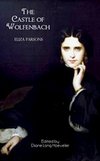 Castle of Wolfenbach (1793) by Eliza Parsons
Castle of Wolfenbach (1793) by Eliza Parsons
Parsons was comparatively old when she began publishing. She was driven to write to support her family after her husband died prematurely when his business failed. She churned out novels and plays in great quantity, including the important early Gothic Castle of Wolfenbach. In Wolfenbach, young Matilda Weimar’s lecherous uncle tries to rape her, so she flees and takes up residence in a haunted castle. The castle turns out not to be haunted, after all: the supposed ghost is the Countess of Wolfenbach, shut up for eighteen years by her murderous husband. As the novel unfolds, both women must avoid their cruel persecutors, and Matilda must uncover her own true parentage so she can marry her lover.
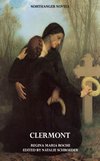 Clermont (1798) by Regina Maria Roche
Clermont (1798) by Regina Maria Roche
Roche was an Irish novelist who was often compared-not usually favourably-with Radcliffe. In Clermont, Madeline Clermont lives with her reclusive and mysterious father until she goes to live for a time with his old friend, the Countess de Merville. But her happiness quickly turns to terror when ruffians attack the gentle Countess, and Madeline is assaulted in a gloomy crypt. And to make matters worse, a sinister stranger appears, threatening to reveal the bloody truth of Clermont’s past unless Madeline marries him. Can she avoid the snares of her wily pursuers, solve the mystery of her father’s past, and win the love of her dear De Sevignie?
 The Mysterious Warning (1796) by Eliza Parsons
The Mysterious Warning (1796) by Eliza Parsons
The good old Count Renaud is dead, and his will makes the degenerate Rhodophil his heir, disinheriting his other son Ferdinand, who has married against his father’s wishes. Rhodophil promises to share his new riches with his younger brother and his wife Claudina, but Ferdinand hears a mysterious voice from beyond the grave, warning him to flee his brother and his wife to save himself from sin and death!
Ferdinand obeys the supernatural warning and sets out to find fortune and adventure. In the course of his quest he will encounter a recluse in a ruined castle with a horrible secret, find himself captured and imprisoned by the Turkish army, and encounter one of Gothic literature’s most depraved female characters, the monstrous Fatima.
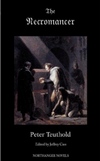 The Necromancer; or, The Tale of the Black Forest (1794) by “Peter Teuthold”
The Necromancer; or, The Tale of the Black Forest (1794) by “Peter Teuthold”
The Necromancer is a translation of various German stories, spliced together, and consists of a series of interconnected tales, all centering on the enigmatic figure of Volkert the Necromancer. Filled with murder, ghosts, and dark magic, and featuring a delirious and dizzying plot that almost defies comprehension, The Necromancer is one of the strangest horror novels ever written. “For magniloquent descriptions of ‘horrid’ episodes, for sheer stylistic fervour in the handling of the supernatural, the work can rank high among its contemporaries.” Michael Sadlier
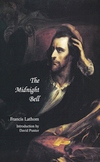 The Midnight Bell (1798) by Francis Lathom
The Midnight Bell (1798) by Francis Lathom
Young Alphonsus Cohenburg enters his mother’s bedroom and finds her covered in blood. She tells him his uncle has murdered his father, and orders him to flee Cohenburg castle forever to save his own life! A disconsolate exile, Alphonsus wanders the earth seeking the means of survival, first as a soldier, then a miner, and finally as sacristan of a church, where he meets the beautiful Lauretta. They wed and establish a home together, and everything seems to promise them a happy future. But their domestic tranquillity is shattered, when a band of ruffians kidnaps the unfortunate Lauretta! Alphonsus must solve the mystery of Lauretta’s disappearance and the riddle of his mother’s strange conduct. And when he hears that ghosts inhabit Cohenburg castle, tolling the great bell each night at midnight, the mystery only deepens….
One of the most prolific authors of the time, and arguably the first queer novelist, Lathom is a fascinating figure who has been unfortunately neglected.
Horrid Mysteries (1796) by Karl Grosse
Perhaps the best description of this novel is that of Professor Fred Frank, who wrote, “Certainly no novel to survive from the Gothic period is stranger, darker, or more precipitously irrational than Horrid Mysteries. Its convolutions of plot are matched by a grim potency of style as found in the memorable descriptions of Elmira’s enforced containment in a coffin during one of her three deaths.” As Sadleir wrote, it is “a strange, wild work, dealing unashamedly in the supernatural, written with a lurid if inconsequent power…certainly it is the most defiantly fantastic of any novel of the period.”
The Orphan of the Rhine (1798) by Eleanor Sleath
Sleath is perhaps the most mysterious of the Northanger novelists. Virtually nothing is known of her, except that she published five novels, all of them rather long, in addition to a children’s book called Glenowen; or, The Fairy Palace (1814), which has been called the first sustained fantasy story for children in English.
In Orphan of the Rhine, the young orphans Laurette and Enrico set out for the Castle of Elfinbach to solve the mystery of their parentage. Heavily influenced by Radcliffe, and consisting of a number of inset narratives, Orphan was summed up by Sadleir as “a strangely attractive absurdity, which excites a sort of sugary fascination over the reader.”
James Jenkins
Valancourt Books
Thanks James for a great introduction to Gothic fiction and its influence on author Jane Austen. I am looking forward to the publication next year of the last two novels in the ‘Northanger Horrid Novels’, Orphan of the Rhine and Horrid Mysteries. Readers will be interested to know that you can also purchase the other three Gothic novels mentioned in Northanger Abbey, The Italian through Valancourt books, and The Monk and The Mysteries of Udolpho published by Oxford Univeristy Press.
Further Reading
- Visit Valancourt Books
- Read my post “All They All Horrid?” on the Gothic novels in Northanger Abbey
- Read about the ‘Northanger Horrid Novels’, at Wikipedia
- Read about The Castle of Otranto and The Mysteries of Udolpho by Margaret (Mags) Sullivan
- Check out The Cambridge Companion to Gothic Fiction (2002)
Go Gothic with Northanger Abbey: DAY 12 Giveaway

The Mysterious Warning
by Eliza Parsons, Valancourt Books (2007)
Leave a comment by October 30th to qualify for the free drawing on October 31st for one copy of Eliza Parson’s The Mysterious Warning, published by Valancourt Books (2007) (US residents only)
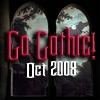 Upcoming event posts
Upcoming event posts
Day 13 – Oct 21 Group Read NA Chapters 18-21
Day 14 – Oct 22 Book Review – OWC NA
Day 15 – Oct 23 Group Read NA Chapters 22-24
Day 16 – Oct 26 Book Preview – OWC Udolpho
Discover more from Austenprose
Subscribe to get the latest posts sent to your email.
Ohhh, this sounds very interesing indeed. :)
LikeLike
Thank you for the write-ups of each novel.
I think you are right that Austen was not mocking the novels, as she takes every chance possible to point out the silliness of novelists who decry the reading of fiction. As has been mentioned in other posts to this blog, I think Austen used the enjoyment of a horrible book to mark a good character.
I think that there is a better comparison to Radcliffe than Rowling, and that would be Laurell K. Hamilton. Everyone reads them, and everyone feels guilty about how much pleasure they take from reading them. ;-)
LikeLike
Thank you so much for this very informative post! I just finished The Italian and am now reading The Mysteries of Udolpho and The Monk will follow. After reading this post I have added each of these to my list of must have novels. (Maybe my name will be on the nice list and I’ll find some in my stocking at Christmas! :) ) I do love Northanger Abbey and I must say reading some of these Gothic stories gives me an even greater appreciation for it.
LikeLike
I forgot to mention how much I like the covers of the above novels! Very intriguing!
LikeLike
Very interesting post. And I’d love to be entered.
Becky
LikeLike
What a great post! I was wondering about this topic when I was reading Northanger Abbey. So informative. Sign me up for the giveaway. Thanks!
LikeLike
I picked Mysteries of Udolpho for a book club a number of years ago and finally! finished reading the book almost a year later. It’s just such a different experience than novels today but it did give me a whole new appreciation for Northanger Abbey and past best sellers.
I’d love to win a copy of The Mysterious Warning.
LikeLike
I’m a huge Austen fan and I’d love to read the books mentioned in this article. I had no idea those were real novels, nor that some are so difficult to find.
Count me in this giveaway! Thanks.
LikeLike
I’d love to be entered!
LikeLike
Oooh, they sound too wonderfully bad to be true! :-) Count me in.
LikeLike
Oh they sound perfectly horrid! I must read them as soon as I can lay hands upon them!
LikeLike
excellent! i never had much interest in gothic fiction but i find i am fascinated now as we are reading northanger abbey and i sought out a few to try on my own. and now i know the source for many others so i am sure i will continue.
thanks for publishing such long lost entertainments.
LikeLike
Fascinating post! I read Udolpho in a college class (on Austen and her influences) but have read none of the others. The connection to later Victorian novelists such as Wilkie Collins is interesting (I just read The Woman in White). I would add Poe as another descendant of this tradition. The mention of one woman dying three itmes, being buried alive, etc. sounds right up his alley!
LikeLike
Thank you for the informative post. I was familiar with The Mysteries of Udolfo but the other horrid novels sound fascinating. I love a new reading list! Count me in on the drawing!
LikeLike
Great post – I cannot believe I was an English Lit major and I never heard about these other authors!
LikeLike
I must confess that I’ve never made it all the way through Udolpho, but I’m slowly amassing a collection of other novels of the late 18th century. One day, I hope, I will have the time to devote to becoming as absorbed in them as Catherine was!
LikeLike
Thank you, Valancourt Books. Another great project would be to track down some of the tales mentioned in “Supernatural Horror in Literature” by H.P. Lovecraft.
LikeLike
Wonderful insight! Thank you, Valancourt Books. If anyone is interested, I have assembled a list of all of the literary works and horrid novels mentioned in Northanger Abbey with resources for reading them on my blog. http://www.pasaii.com/hello/northanger-abbey-horrid-novels/
LikeLike
Thanks!
LikeLike